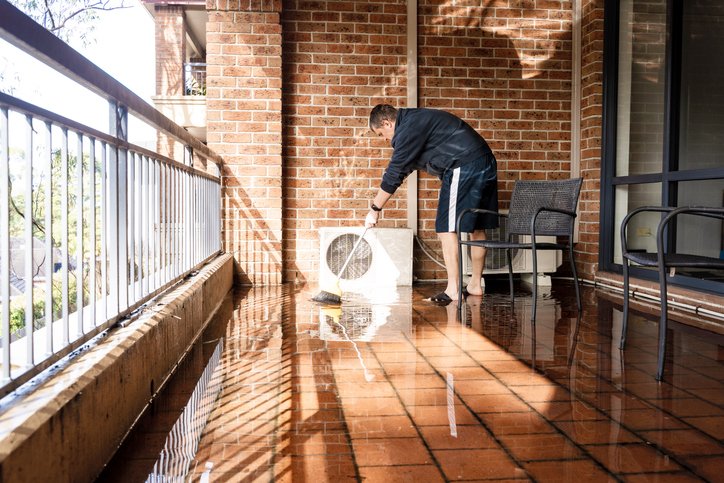Sydney’s Bomb Cyclone: What Building Managers Need to Check Now
Storms don’t cause new problems — they expose the ones already hiding beneath the surface.
When a cyclone-level storm hits Sydney like the one we’ve just experienced, the aftermath can be chaotic. Cracks widen. Leaks suddenly appear. Balconies begin showing signs of movement.
But here’s the truth:
Extreme weather doesn’t create building defects — it reveals the ones already lurking beneath.
If you manage a residential or commercial building, now is the critical window to act. At Projex Pro, we’re already supporting strata and commercial clients with post-storm assessments, emergency make-safes, and long-term remedial strategies.
And here’s something many building managers overlook:
Right now is actually the ideal time to have a professional assess your site.
When water ingress is actively occurring, it’s far easier to trace the source, document the damage, and explain the root cause to committees or insurers. It gives you hard evidence in real time — not just water stains weeks later.
What to Inspect After a Bomb Cyclone
Façades and Cladding
Look for signs of displacement, hairline cracking, or movement — especially on older buildings or those with rendered finishes.Water Ingress Points
Inspect ceilings, walls, balconies, window frames, and common areas for any signs of new staining, leaks, or mould.Drainage and Balcony Systems
Overflowing drains, pooling water, and blocked scuppers often signal deeper issues with waterproofing or fall design.Fire Compliance Zones
Wind and water can dislodge covers, obscure signage, or block access points — all potential compliance risks.Structural Cracks
Keep an eye on stairwells, slab edges, and columns — even small shifts can indicate movement that needs urgent review.
How to Use This Storm to Your Advantage
This weather event isn’t just a challenge — it’s a unique opportunity to catch building issues in real time. Here’s how to make the most of it:
Book a Site Inspection While Evidence Is Visible
Water ingress is much easier to diagnose while it’s actively occurring. Wet patches, dripping points, and pooling help reveal the true path of water — not just the damage it leaves behind.Take Photos or Videos Before It Dries Out
Encourage building residents or cleaners to document leaks, overflow, or surface movement. These records are powerful tools for insurance claims and committee presentations.Get an Expert Report for Insurance Purposes
A professionally documented inspection report, done during or just after a storm, can significantly strengthen your position if you need to lodge a claim.Educate the Strata Committee with Visual Evidence
When issues are visible and recent, it’s easier to get approval for remediation works. Show them where the water is tracking and why a surface fix won’t solve it.Plan Preventative Works While the Pain Is Fresh
Use this moment of awareness to push through proactive upgrades — like membrane reworks, balcony falls, or proper drainage. It’s always easier to get buy-in when people have just seen the damage firsthand.
Why It Matters
Ignoring these signs can:
Lead to escalating structural damage
Jeopardise insurance claims if reported too late
Expose committees and owners to long-term liability
We understand the pressure strata managers are under during storm events — coordinating trades, answering residents, and managing building risk. That’s why Projex Pro offers priority storm response services with clear, calm, expert support.
What We’re Offering Right Now
Storm damage inspections with written reports
Emergency make-safes (licensed and insured)
Remedial quote packs for strata committee approval
Class 2 licensed services for complex or high-risk work
Need help?
We’re currently booking priority site visits for impacted buildings across Sydney.
Let us help you stabilise the situation, get clarity, and move forward with confidence.
Book a site assessment or email us directly at office@projexpro.com.au


